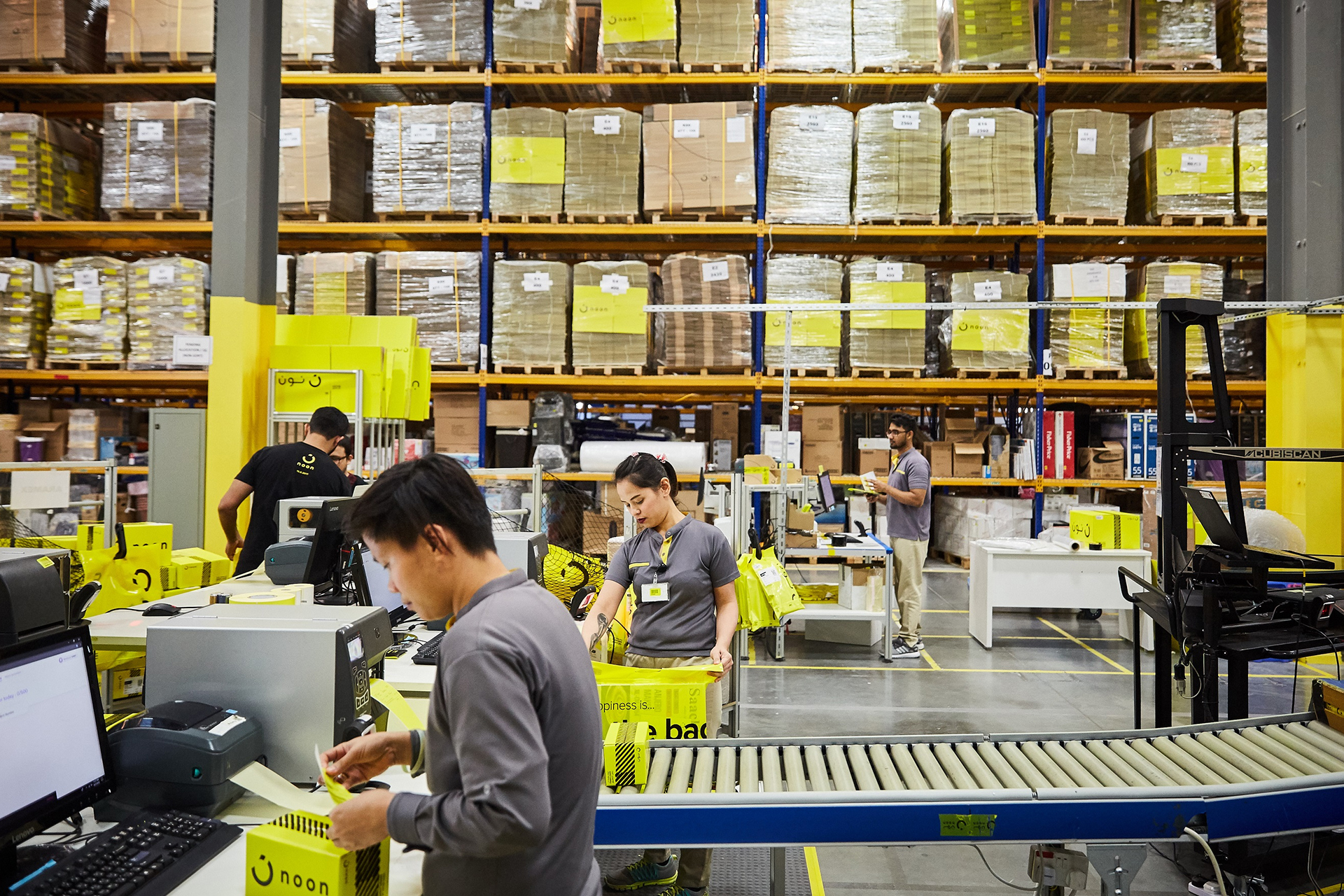How Can You Compete with Retail Giants Like Noon.Com?



So, you wanted to be a retail entrepreneur. You did all the dreaming and planning to be the next Noon.com. Next thing you know, you are struggling day and night. Did you think it was going to be easy?
Being an entrepreneur in the retail business is not easy. It takes lots of courage, careful planning, and a lot of money. Any start-up or a new business goes through a roller coaster, and there is always a fear that it will be engulfed by giants in the market. It takes years of perseverance and lots of patience.
There are many challenges faced by new or small businesses. These challenges can be overwhelming and create a negative mindset. A businessman might lose enthusiasm or settle for something small or a regular job.
Let’s talk about steps to compete with retail giants, shall we? The following are some of the most prevalent challenges and tips to tackle them so you can efficiently compete with retail giants like Noon.com.
1. Budgeting and financial management
If you own a small online business, it is crucial to manage your budget efficiently. Your marketing expenditure must fit into your budget. Refrain from overspending. There are plenty of social media networks that can be used free of cost for marketing.
If you want it to take place for yourself, you need to be well prepared and definitely need some capital. Try to raise capital so your business can sustain itself. The majority of outstanding business ideas never make it to the venture capital stage because the entrepreneur is either unprepared or lacks the necessary skills to raise funds.
Pandemic has opened doors for e-commerce. So, people, it is the right time to go for it. Invest wisely.
2. They all want a hero product
Every new business that becomes successful owes it to its hero product. The product which generates the most orders and revenue, in turn, is what we refer to as a hero product.
So, decide your niche that suits your convenience and be specific to it. Whenever you browse through an e-commerce website, unique products grab your attention.
Regardless of where you reside, you are likely to come across a few internet megastores like Noon.com, where you can buy practically everything you want. These shops offer a wide range of products which attract as many customers as possible. But this stage comes much later when you have already established yourself.
Even the biggest websites can't always compete with specialist sites when it comes to providing more specialised things. There are many examples of small websites that specialise in small things, and their major source of revenue is that one product.
For example, if your e-commerce offers printing services, like those mugs or tee shirts with a picture of your kids, etc., promote that the most. It could be a specialised home décor website or theme-based baked goods services - promote what represents you the best.
Only when you have established your website will you begin to promote other related kinds of stuff and keep expanding.
3. Marketing and Management

As discussed earlier, Market your hero product and niche extensively. Before marketing, follow the trends and make sure your product marketing aligns with the trend. Be it a TV ad, or newspaper, or a social media ad, always follow the trend.
Instead of going to a big marketing agency, you can always promote your products by communicating with social media influencers. They have a mass following, and your product will have a greater reach. Be smart and stay away from controversies.
4. Consumer segmentation and building a loyal customer base
There is no product which can attract all kinds of clients and customers. So, to compete with giants while building a brand for yourself, it is essential to know your customer. Customer segmentation is the process of grouping consumers together based on shared characteristics that distinguish them from other groups.
The goal of customer segmentation is to make it easier for you to communicate with and understand your consumers and build a loyal consumer base. If customer segmentation is done correctly, it helps you target your paid advertising more effectively, especially if you are using sites like Facebook, which have enormous data.
5. Use dynamic pricing and price optimization techniques
Now that you are in the e-retail business, you must know a thing or two about dynamic pricing. With the continued growth of online purchasing, dynamic pricing has never been more critical than it is now. The capacity to act quickly and decisively on pricing has a significant impact on overall branding and profit.
AI and Machine learning technology advance dynamic pricing by allowing it to analyse significantly larger data sets and take into account a variety of influencing factors to predict the price. Big e-commerce companies use AI, and they fix their pricing within minutes.
For a small company, it might just not be possible to build the pricing strategy that allows you to achieve your commercial goals by leveraging the power of your product pricing. Yes! It sounds exhausting, but with practice, you will soon be an expert.
6. Keeping up with the latest trends
New year, Christmas, Diwali, national holidays - these are the times when we generally see so many new advertisements. A new popular meme, an occurrence, anything can go viral overnight. So, keep yourself up with trends and incorporate those in your ad.
You'll be continuously learning new tools, new events to attend, and new methods to be more productive if you stay up with trends. This will provide you with new things to work with, allowing you to experiment with more kinds of stuff and come up with new ideas every now and then.
Associate yourself with people in the same or similar business. It gives you knowledge and insights. Keep a close monitor of daily statistics and always - always – always keep an eye on your competition.
7. Optimise your Business Inventory Management

In this present time, focusing on improving assortment is critical to success. Using an artificial intelligence (AI) solution to create assortments that people desire to buy can help merchants generate traffic to their online storefronts. The biggest benefit, and one of the reasons it can be a good optimization strategy, is that there is no risk of revenue being trapped in dead stock.
Most e-retail companies prefer “first-in, first-out” (FIFO). It refers to the order in which things are received by your warehouse and delivered to end customers. You can also use “drop shipping” to sell your products. When a customer places an order, you fulfil it and ship it directly from the manufacturer. In this case, you are just a middle man, it saves time, and the product is delivered directly to the consumer.
In inventory management, scanning products whenever they are received, transferred, transported, or altered in any way is a recommended practice. All e-commerce business owners should keep a minimum amount of goods on hand. Classify your inventory and evaluate it on a monthly or quarterly basis to ensure that the categories you've created reflect actual purchasing trends.
8. Are you keeping a keen eye on your competitors?
Haven’t we all heard, “keep your friend close, keep your enemy closer?” Well, your competitors are not exactly your enemy, but you have got to monitor them. Competitor analysis can assist merchants in gaining a better understanding of how their competitors promote, strategise, and price their items. Determine what you want to know, such as:
What type of image or product description do your competitors employ?
What are the terms and conditions of their offers?
What are their refund policies?
You can employ tools, which, when given the proper keyword, will provide a wealth of information. Visit their website regularly and keep an eye on them. Follow their social media profiles and their regular activities, and their brand story or promotion stories. It will provide information about their future ambitions.
The review area of your competitor’s website is a gold mine. Look for dissatisfied customers. It allows you to generate leads from dissatisfied customers.
It is also critical to keep track of how quickly their audience expands. Use necessary tools and apps and plan your strategies accordingly so your product promotion stands out and is not overshadowed.
9. Time to Make Contact with Other Small Enterprises
If you want to expand your business or provide a wide range of products, you can always contact and collaborate with other budding small entrepreneurs. Because small business owners often compete against one another, the market becomes more competitive, and giants like Noon.com keep growing.
For a change, instead of competing, forming alliances with other small businesses can make it easier to stake you and your collaboration position in your field. See what kind of special offers or promotions can be arranged for the benefit of all participants. It will also assist in establishing a positive reputation in the community.
It will help you gain a lot of new followers and customers who are interested in what your company offers if you join forces with another firm. You may team up to co-host a webinar or podcast series or promote each other's services.



















